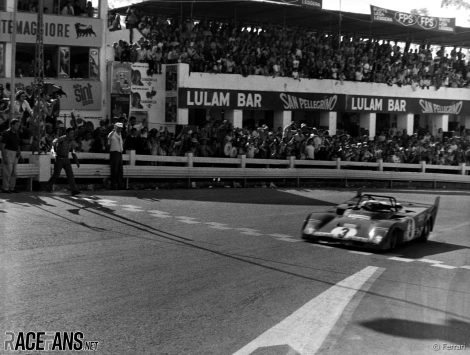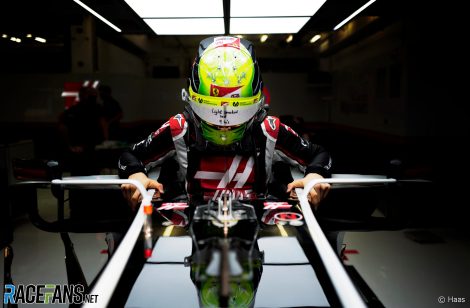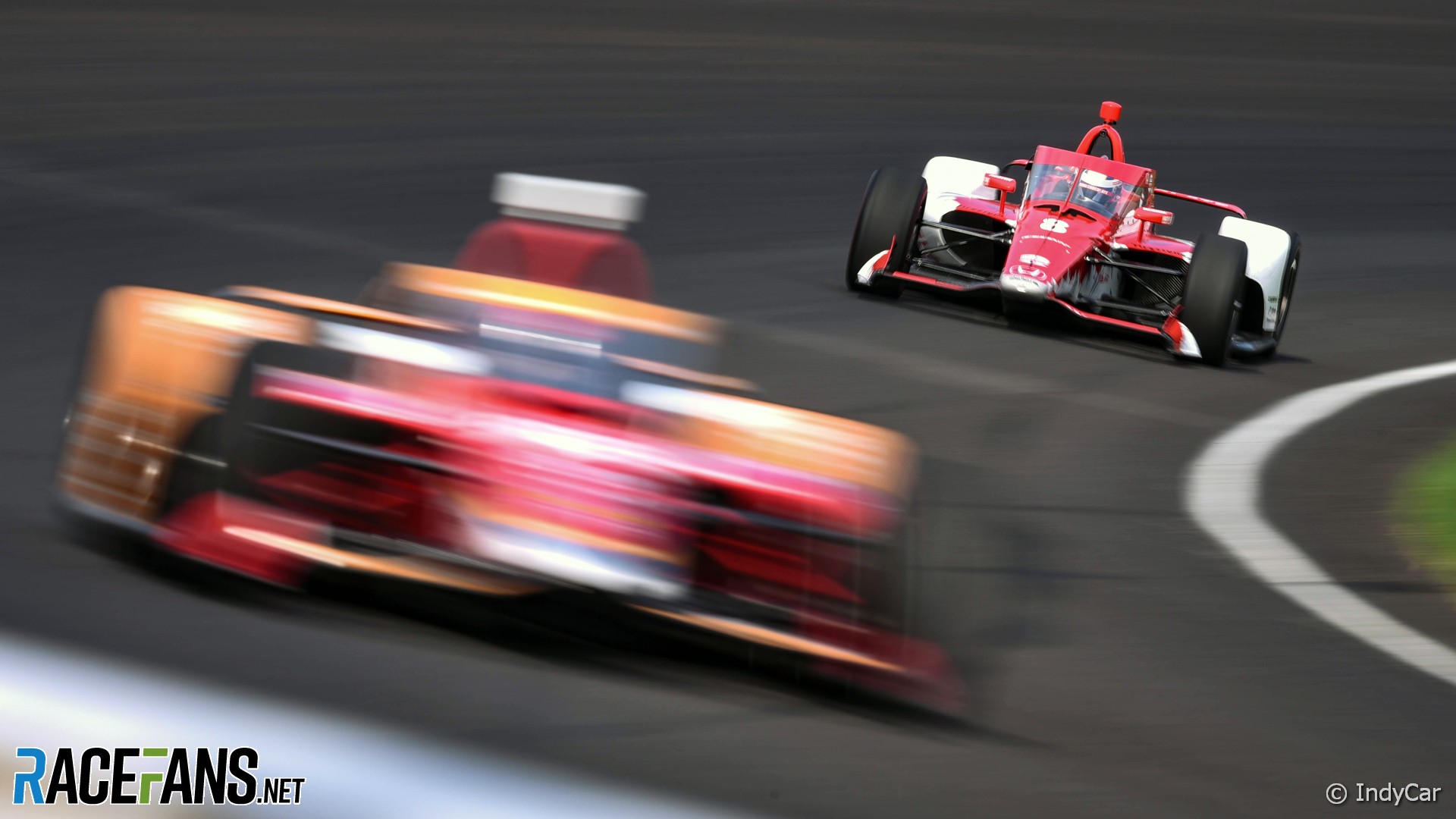The 2023 season will mark exactly 50 years since Ferrari last competed in the top echelons of the sports car world championship under whatever guise it has been staged: take your choice from ‘International Championship for Sports-Prototypes’, ‘World Championship for Makes’, ‘World Championship for Sports Cars’, ‘World Sports-Prototype Championship’, ‘World Endurance Championship’ plus a few others.
There has been scarlet representation on endurance championship grids since – think the Ferrari F40, 550 Maranello, 430/458/488 and suchlike competing in GT categories, plus the Dallara-constructed 333SP. But at the sharp end Maranello’s red cars have long been conspicuous by their absence.Prior to 1973 Ferrari had been a mainstay of sports car racing, often neglecting motors racing’s premier category in favour of pursuing two-seater successes with designs such as the stylish yet solid 250LM, the sensationally slippery 330 P4 – surely one of the most beautiful race cars ever – and the sublime 312PB, which in 1972 won everywhere save Le Mans, which Ferrari had not entered, ostensibly for fear of failure.
A case could be made that sports car racing and Formula 1 don’t mix. After John Surtees’ 1964 F1 title, Ferrari failed to win another until 1975. Its return to F1 success came two years after pulling the plug on a prototype programme that saw it take on, and lose, to Ford as recently immortalised in Le Mans ’66 (aka Ford vs Ferrari). McLaren can attest to the no-mixing theory: during its sports car years, whether in CanAm, WSC or Le Mans, its F1 fortunes suffered.

The programme was due to be announced in early December but the abrupt departure of Ferrari president and CEO Louis Camilleri after a bout of Covid led to a postponement. It was eventually confirmed three months later by Ferrari president John Elkann, with Antonello Coletta, head of the company’s (non-F1) sporting activities department confirmed as leader of the programme in addition to his role as head of GT racing.
“In over 70 years of racing, on tracks all over the world, we led our closed-wheel cars to victory by exploring cutting-edge technological solutions: innovations that arise from the track and make every road car produced in Maranello extraordinary,” said Elkann. “With the new Le Mans Hypercar programme, Ferrari once again asserts its sporting commitment and determination to be a protagonist in major global motorsport events.”
Advert | Become a RaceFans supporter and
The move was not unexpected: Camilleri alluded to both IndyCar and WEC programmes as a riposte to plans to reduce F1’s cap by $30m to $145m. It is known Ferrari held wide-ranging talks with IndyCar – these extended beyond purely engine supply to this sole chassis category – before deciding to focus on WEC. However, a Maranello insider maintains some form of IndyCar involvement remains on Ferrari’s radar.

That said, there is no denying that F1’s cost-saving initiatives, which include the budget cap, various test restrictions and component sharing, freed up human, financial, capital and engineering resources that can be deployed in other categories as and when required, particularly where these can be directly transferred. For example, Ferdinando Cannizzo, former head of F1 innovation and hybridisation, is engineering director.
Ferrari’s GT spokesperson confirmed to RaceFans that the full programme will be operated in-house, with only specialist components and services out-sourced. He indicated that the sale of customer cars could follow once the programme was established; the first priority is, though, to ensure success in a field boasting reigning WEC champions Toyota plus Peugeot and Glickenhaus, with Porsche, Audi and Acura in LMDh.

The question is less whether Ferrari can beat the likes of Toyota and Peugeot in a straight endurance fight, but more a matter of whether Maranello has the strength in depth to do so without jeopardising its return to winning form in F1. As Ferrari discovered 50 years ago, winning in sports cars counts for naught if victory comes at the expense of success in F1. Ferrari’s target must be to win both world titles – simultaneously.
Advert | Become a RaceFans supporter and
News Focus
- F1 shows why NASCAR will struggle to recreate yesterday’s ‘Canada 2010’ drama
- How Hamilton and Ecclestone’s escalating feud prompted Massa’s new mission
- Red Bull celebrates its past at launch but Horner’s future remains the focus
- Why Andretti isn’t giving up yet on its attempt to enter F1
- Which races are vulnerable as F1 makes room for two Spanish rounds in 2026?





Sundar Srinivas Harish (@sundark)
10th April 2021, 12:58
The racing world is also vastly different now than it was when Old Man Ferrari was fighting Henry Ford II for the honours at LeMans. Ferrari has vastly more resources than nearly any other automaker that competes in motorsports, and the F1 budget cap only helps them allocate money elsewhere. Add to that the number of professional teams that will run teams and win titles for you, some of them even being free to contract with Ferrari right now, and you have a potential race winner straight out of the box.
Ferrari management is probably seriously considering partnering with proven race winning teams like Joest (if Porsche permits them :P) or maybe upgrading AF Corse to a top class effort. AF Corse and Risi Competizione have had a good amount of success as “customers” of Ferrari and if that model worked in GTLM/ GT-Pro, I don’t see why it wouldn’t work in Hypercar.
Sensord4notbeingafanboi (@peartree)
10th April 2021, 14:16
I assume that comment about f1 and sportscar not mixing was only made to bring up ford v ferrari. So many clichés.
Le Mans is won by the highest bidder, first and foremost.
ferrari won le mans and f1 in the same season a fair few times.
The ford gt was not an instant success.
you can refresh your memory watching yearly highlights (available at motorsport.com), the videos capture the “politics” quite and the rule sets.
Balue (@balue)
10th April 2021, 14:50
What if Ferrari doesn’t win there either, will the brand start to suffer? Just a regular supercar maker and not that special something any longer?
Don
10th April 2021, 16:34
Why Ferrari (and Merc) hasn’t joined IndyCar as an engine builder is a mystery to me. Yes, it’s their biggest market by far. They’d have a chance to win the biggest race on earth, the Indy 500. They could essentially win the manufacturers triple crown – Le Mans, Monaco, and the Indy 500. What an accomplishment that would be for the brand. A nice way to diversify their racing portfolio like McLaren has done.
pastaman (@)
10th April 2021, 18:46
Yep, on the cheap too
Victor (@mrmuffins)
10th April 2021, 19:16
Technically, as an engine manufacturer at least, Mercedes have that one in the bag: they won at Le Mans in 1987 as the Sauber Mercedes C9, the Indy 500 in 1994 with the Penske Mercedes PC23 and Monaco several times over with McLaren and Mercedes AMG.
Sensord4notbeingafanboi (@peartree)
10th April 2021, 23:59
Is indy the biggest race? It is in the world (usa). I know what you mean Ilmor won everything, sometimes as Ilmor Mercedes sometimes as just Mercedes. Often car makers do seem to let great marketing slide.
Don
11th April 2021, 15:35
Based on attendance yes it is the biggest, outdrawing Le Mans by a considerable margin. It draws a minimum 300,000 – 400,000 people to a one day event that most call it not just the biggest race, but the biggest single day sporting event in the world. 175,000 tickets have been sold to this years race with people not even knowing whether spectators will be allowed yet. Roger Penske has stated he would like to have and limit attendance to 250,000 fans due to Covid. I’d suggest putting it on your bucket list. It is an amazing event to be a part of.
anon
13th April 2021, 23:32
Don – how do you actually know that it pulls “a minimum 300,000 – 400,000 people”?
IndyCar refuses to share any information about attendance figures at the Indy 500, and under normal circumstances they also don’t publish any official ticket sales data either – the claimed sales of 175,000 this year is the first time they’ve published a figure for ticket sales in decades (as an aside, Mark Miles indicated in 2019 that IndyCar doesn’t even have auditable attendance figures for most of their other races).
Even the capacity of the grandstands is not officially stated, and that varies quite a bit depending on whom you ask – some quote a figure of 257,000, but The Indianapolis Star has published figures in the past suggesting that it’s more like 225,000 these days.
The rough estimates from independent organisations points to normal attendances of 250,000-300,000 at the Indy 500. There are some vague hints that is a more realistic range given that Mark Miles suggested the 2016 event sold “70,000 to 100,000 more tickets than normal”, and that was estimated to have had an attendance of 350,000 (i.e. implying that ticket sales are more normally 250,000-280,000).
If the implied range of 250,000-280,000 from Miles’s comments is a more realistic normal range, then it’s questionable whether it really does regularly “outdraw Le Mans by a considerable margin”. The ACO does publish official attendance figures for the 24 Hours of Le Mans, and those figures have generally been in the 250,000-260,000 bracket in recent years – suggesting that the attendance at the 24 Hours of Le Mans is probably fairly similar to the normal number of attendees at the Indy 500.
anon
10th April 2021, 21:05
It seems that there have been a fair few issues with IndyCar’s management, with a sticking point being the delays and confusion over when the engine regulations are meant to be changing.
IndyCar is meant to be switching to a new engine format, with the capacity changing from 2.2 to 2.4 litres and a hybrid element being added, but the series has been delaying its introduction for some time now: originally meant to appear in 2021, they were firstly pushed back to 2022, and now 2023.
Whilst the objective was meant to be to allow more time to try and lure in more entrants, it’s had the opposite effect due to the uncertainty that they’ve created. New manufacturers don’t want to spend money developing an engine for the current format if it is meant to be phased out soon, making it a total waste of money and time, but the frequent obfuscation over the new engine rules means that manufacturers are getting fed up waiting for a decision to be made.
Supposedly, IndyCar was talking to both Porsche and Ferrari in an effort to lure them in. However, Porsche ended up getting fed up with the lack of clarity from IndyCar and, once the ACO finally sorted out the current regulations, went “forget it, we’re going into the WEC”, and some have suggested that Ferrari came to the same conclusion as Porsche and decided it wasn’t worth the hassle.
Also, and to be brutally honest – the Indy 500’s viewing figures really haven’t been that great for at least the past decade. The general trend has been a slow decline since 2005 – they were generally pulling in over 7 million live viewers back in the early to mid 2000s, but in recent years the figures are more around 5.5 million at best. If we exclude the very low 2020 viewing figures of 3.7 million as uncharacteristic due to the current pandemic, you still only have to go back to 2018 to find the next worst set of viewing figures – whilst some complain that F1 is seeing a slow slump in figures, the Indy 500 has the same problem.
Michael A.
11th April 2021, 1:17
Thank you for an interesting article.
My enthusiasm for Formula One goes back to 1950s schooldays and, it used to be a great thrill to hear (BBC radio) and read (Motor Sport) about Formula One heroes taking part in sports car racing as well as in various non-championship Grand Prix races. There was also enthusiasm for the then Indianapolis 500, particularly when those cars came to Monza for a good challenge. Later, I went to Le Mans as a spectator and was super-thrilled to witness the Rodriguez brothers, both Grand Prix drivers, storm away into a commanding lead in a Ferrari sports car, only to retire later, but a Ferrari did win that motor race.
I have a firm belief that Ferrari, and others, can do the same today.
I also have a long-standing belief that a true World Championship should feature championship Grand Prix (for purists), a series of sports-car (suitable for road use) races, a series of oval style races (for out and out speed celebration) and a series of hill climbs (for hill climb specialist cars). To me, that would make a true world championship for constructors and for drivers.
Please, bring it all on!